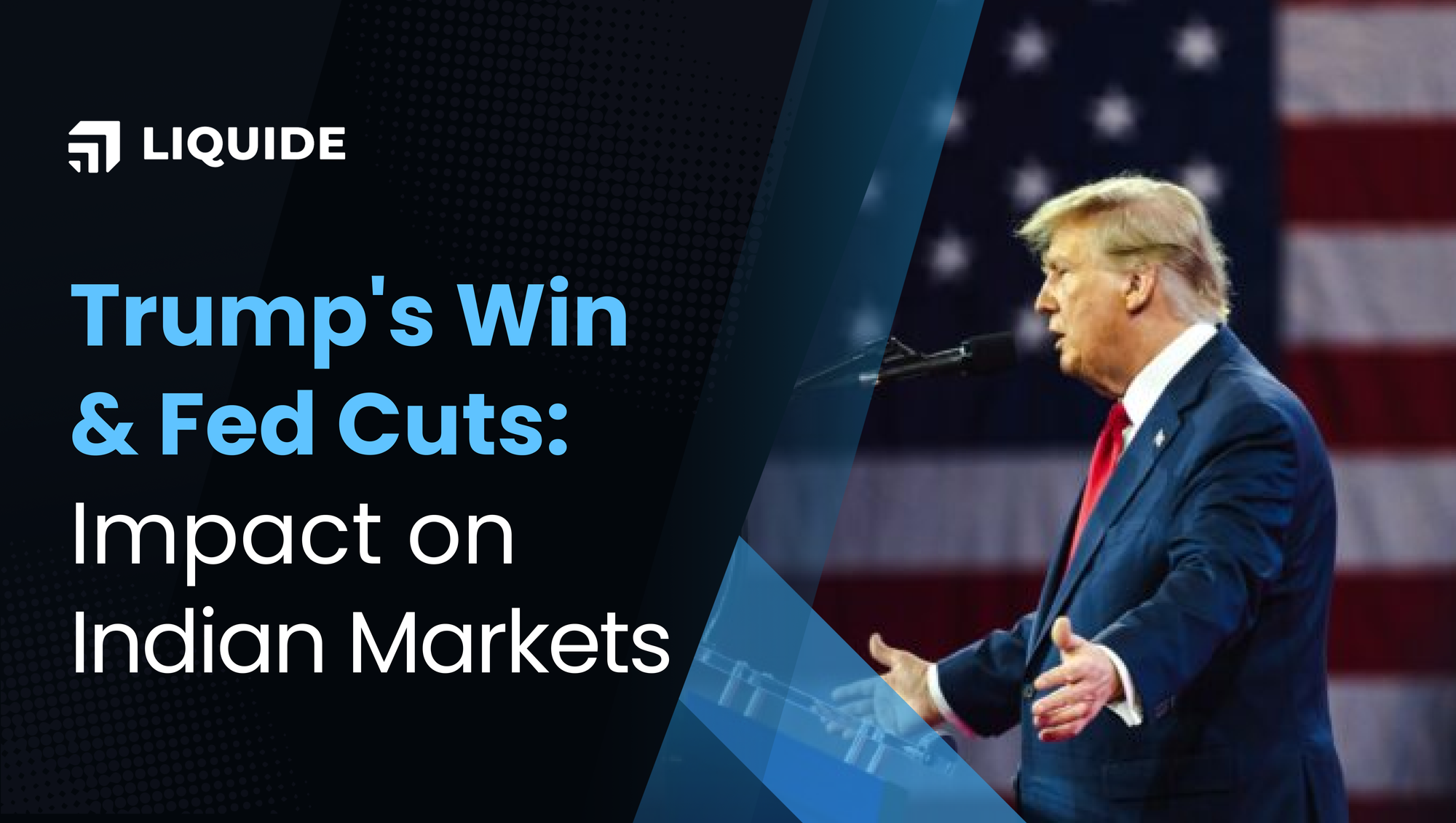How Trump's Win and Fed’s Rate Cut Affect Indian Markets
Explore how Trump’s return to the White House and the Fed’s recent rate cuts could influence Indian markets. From banking to real estate, discover the potential impact on key sectors and investment opportunities.

With Donald Trump back in the White House and the Federal Reserve’s recent rate cut, there are bound to be ripple effects in markets around the globe, including here in India. Understanding these impacts on key sectors, from banking to real estate, is essential for Indian investors and policymakers.
The Federal Reserve's Rate Cut: Implications for Global and Indian Markets
On Thursday, the U.S. Federal Reserve cut interest rates by 25 basis points, lowering them to a range between 4.5% and 4.75%. This move marks the Fed’s second rate cut this year, aligning with its broader goal to rein in inflation. Jerome Powell, the Fed’s Chair, has indicated that more cuts may follow in December, depending on economic data. The timing—just two days after Trump’s election win—has certainly amplified market volatility.
How the Fed’s Rate Cut Affects Indian Markets
So, why does this matter for India? The Fed’s rate adjustments affect not only the U.S. economy but also have global repercussions, including here. When U.S. interest rates drop, borrowing gets cheaper, encouraging American households and businesses to spend more. This boost in demand can indirectly benefit Indian companies, especially those with a strong U.S. presence, as they see increased export opportunities.
However, if inflation pressures cause the Fed to pause rate cuts, India’s own monetary easing could be delayed, which may weigh on interest-rate-sensitive sectors like real estate and finance.
Trump’s Fiscal Policies: Potential Impact on Indian Sectors
With Trump’s win, we’ve already seen a stronger U.S. dollar and a rally in American stocks, but it could be tough on other currencies, including the Indian rupee. His fiscal policies—like tax cuts and increased tariffs—are expected to boost U.S. growth but may also drive inflation up. This could put pressure on the Fed to pause its rate-cut cycle, which could have a domino effect, impacting central banks worldwide, including the Reserve Bank of India (RBI).
- U.S. Investments and Indian Exporters: Trump's proposed tax cuts, such as reducing corporate tax rates from 21% to 15%, could lead to increased investment and job creation in the U.S. Indian companies with a strong U.S. presence, particularly in IT services and manufacturing, stand to benefit as U.S. corporations expand.
- Trade Tensions and the ‘China+1’ Strategy: Trump’s protectionist policies could lead to increased tariffs on Chinese goods, accelerating the “China+1” strategy, which is a push to diversify supply chains beyond China. This could create opportunities for Indian exporters in sectors like chemicals, defence, electronics, and solar energy as global companies seek alternatives to Chinese suppliers.
Sectoral Analysis: How Indian Industries Could Be Affected
- Pharmaceuticals and Healthcare: Trump's "America First" approach aims to reduce dependency on foreign medical supplies, particularly from China. This could be advantageous for Indian pharmaceutical companies as they might find more openings to supply generics and active pharmaceutical ingredients (APIs) to the U.S.
- Real Estate: With potentially higher U.S. interest rates, the RBI may avoid cutting rates, which would keep borrowing costs high in India. This could lead to subdued demand in the Indian real estate market, especially within the affordable housing segment that is sensitive to interest rates.
- Textiles and Consumer Goods: With a stronger U.S. economy potentially fueled by Trump’s tax cuts, American consumer demand for imported goods, including textiles, could rise. Indian textile manufacturers may benefit from this uptick in U.S. spending.
- Commodities and Metals: Trump’s past policies included tariffs on metals like steel and aluminum, a trend that could continue, driving global metal prices higher. Indian manufacturers reliant on imported metals could see increased costs as a result.
- Oil and Energy: Trump's pro-oil policies and emphasis on U.S. energy production could reduce global oil prices. This may be beneficial for India, a net importer of oil, by lowering import costs and reducing inflationary pressures.
Conclusion: What This Means for Indian Markets
With Trump back and the Fed cutting rates, the Indian market will likely experience some shifts. Sectors like pharmaceuticals, textiles, and manufacturing could see a boost in demand as the U.S. economy expands and seeks alternatives to China. However, there are also challenges—higher U.S. rates may limit the RBI’s ability to lower borrowing costs, making things tougher for banks, NBFCs, and real estate players.
In short, while there’s potential for growth, it’ll be a balancing act as India navigates these global shifts, seizing new opportunities while staying cautious of the risks.
Stay updated with our latest blog posts and expert insights with Liquide. Download the Liquide App now to access real-time market analysis and recommendations tailored to enhance your investment strategy.

